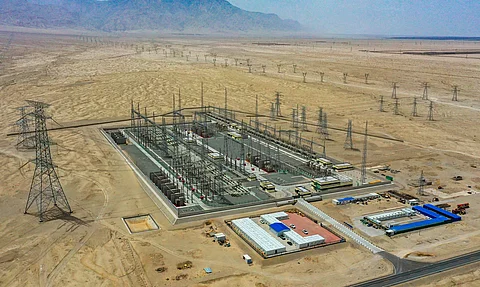

Chinese construction teams have completed a massive extra-high voltage power loop around the Tarim Basin—one of the harshest landscapes on Earth—transforming the remote region into a major new-energy transmission hub.
The 4,197-km, 750-kilovolt transmission and transformation project, which took 15 years to build, now forms the largest power grid loop in China, according to state broadcaster CCTV. The final section was completed on Sunday at the southern edge of the Taklamakan Desert and is expected to go online in November.
Spanning five prefectures and covering over 1.06 million square kilometres in the Xinjiang Uygur autonomous region, the infrastructure includes nearly 10,000 transmission towers and nine substations. These facilities will collect solar, wind, thermal and hydropower, boost voltage, and transmit electricity to surrounding areas, according to state news agency Xinhua.
Much of the project runs along the Taklamakan Desert—dubbed the “sea of death” for its shifting dunes—which covers around 60 percent of the Tarim Basin. “During construction, large vehicles couldn’t move through the desert due to the lack of roads and frequent sand pits,” said Li Jun, a project manager from the State Grid Xinjiang Construction Branch. “We had to build roads along the entire line to transport materials.”
Workers stabilised desert routes by excavating sand and laying permeable fabrics. In mountainous areas—spanning from the Kunlun Mountains in the south to the Tianshan range in the north—cableways were used to haul nearly 3,000 tonnes of materials for tower construction. Grass grids were also planted around tower bases to slow dune movement, a technique also used in China’s broader desertification control efforts, including a 3,050km green belt around the Taklamakan.
Before the new loop, the region relied on a 220-kV grid with a maximum transmission distance of 300 km and a capacity of 3,00,000 kilowatts. The upgraded network more than doubles the transmission range and increases capacity tenfold to 3 million kilowatts, enabling long-distance energy transfer to other regions.
Xinjiang currently generates over half its electricity from renewable sources, and work has already begun on secondary transmission lines that will eventually connect the grid to neighbouring Qinghai province and as far south as Sichuan.